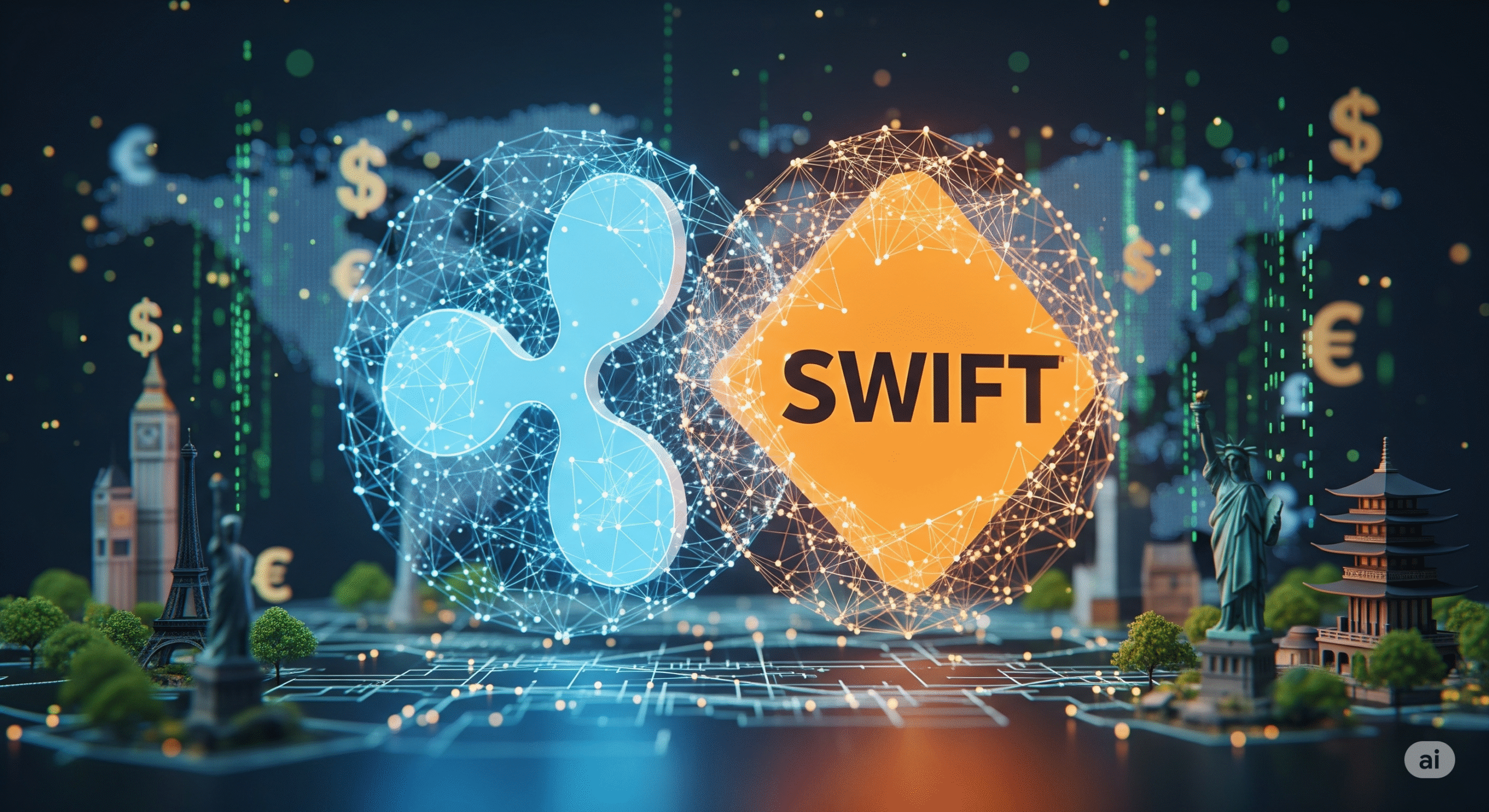The cryptocurrency world is always buzzing with new, exciting ideas and bold predictions. But amid all this daily talk, there’s one story quietly gaining momentum: the incredible potential of XRP not just to connect to the SWIFT banking system, but to completely change the way global money moves through it. Imagine a world where sending money across borders is instant, seamless, and extremely low cost.
It’s not just a dream; New analyses paint a clear picture. If XRP can capture even a small fraction of SWIFT’s massive transaction volume over the next decade, its value could skyrocket. It’s not just a new cryptocurrency; It’s about XRP pioneering SWIFT Global Finance, transforming digital assets from niche curiosities into fundamental pillars of our financial world. Indeed, the future of XRP for SWIFT Global Finance looks truly transformative.
Beyond Replacement
The future of finance was a hot topic at the 2025 XRPL Apex event, where Ripple CEO Brad Garlinghouse offered electrifying insights into the XRP Ledger’s (XRPL) burgeoning trajectory. When pressed on how much of SWIFT’s global transaction volume the XRPL could realistically command within five years, Garlinghouse didn’t speak of direct replacement, but of powerful complementarity. He underscored that XRP’s true genius lies not in merely messaging, but in its unparalleled ability to inject liquidity into the global financial bloodstream. His bold projection? The XRPL could facilitate up to 14% of SWIFT’s total transaction volume within that relatively short timeframe.
But what if we dream bigger? Our latest analysis dares to push that envelope further, envisioning a scenario where XRP handles a staggering 28% of SWIFT’s transaction volume over the next ten years. Let that sink in: that’s an eye-watering $42 trillion annually, or approximately $115 billion in daily transactions coursing through the XRPL. To grasp the sheer scale, consider that Forbes estimates SWIFT’s current annual transaction volume at around $150 trillion, with some theoretical models suggesting even higher figures. This isn’t just growth; it’s a financial earthquake, positioning XRP at the very heart of cross-border payments.
The Velocity Factor
So, what does this massive price increase mean for XRP? To illustrate, we used advanced AI models, including ChatGPT, to predict the value of XRP needed to support this $42 trillion annual flow. Our calculations take into account the current XRP price of $3.25 and approximately 60 billion tokens in circulation.
ChatGPT’s insights centered on a critical concept: the speed of token trading. Think of token trading velocity as the pulse of the network the number of times each XRP token is traded in a year. Higher speed means that tokens work harder, facilitating more efficient transactions. A lower velocity indicates that tokens are held for a longer period, requiring a larger total supply to process the same volume.
The Low-Velocity Surge
In the first scenario, the AI explored a low-speed environment, where each XRP token completes only four transactions per year. This decrease in currency turnover means greater demand for XRP to meet the expected annual volume of $42 trillion. To power this massive financial engine, XRP would need $10.5 trillion in liquidity. Dividing this amount by the 60 billion XRP in circulation, the numbers reveal an estimated price for XRP of around $175 per token. Even with tokens moving at a moderate pace, this massive volume unlocks tremendous value.
The Ultra-Low Velocity Power Play
Then came the “very low speed” scenario, where ChatGPT tightened the restrictions, causing the annual currency turnover to drop to just two transactions. This conservatism may be driven by factors such as increased regulatory restrictions, long settlement periods, or a strong tendency to hold currencies long-term. At this rate, the system will need a massive $21 trillion in XRP liquidity. With the same supply of 60 billion tokens, the expected price will rise significantly to $350 per XRP.
Beyond the Horizon
It is important to remember that these scenarios are based on XRP being the sole bridge asset for this projected 28% share of SWIFT transactions. But what if XRP expands further, capturing more than 28%? Or what if its circulating supply decreases over time due to token burns (where tokens are permanently removed from circulation) or simply through increased long-term holding by institutions and individuals? In such cases, the price ceiling could collapse, pushing XRP’s value to astronomical levels.
Undoubtedly, XRP’s path to achieving this deep integration into the global financial system is complex, requiring sustained efforts in regulatory clarity, continued technological advancements, and widespread institutional adoption. However, these compelling analyses paint a clear picture: XRP is not just another digital asset. It is a competitor with enormous potential to radically reshape the architecture of cross-border payments, and in doing so, achieves truly historic valuation.
Disclaimer:
This article is for informational and speculative purposes only and does not constitute financial advice. The views expressed herein are those of the author and do not necessarily reflect the opinion of [sarazazmi.com]. All readers are strongly encouraged to conduct thorough independent research and consult with a certified financial advisor before making any investment decisions. [sarazazmi.com] is not responsible for any financial losses incurred.
